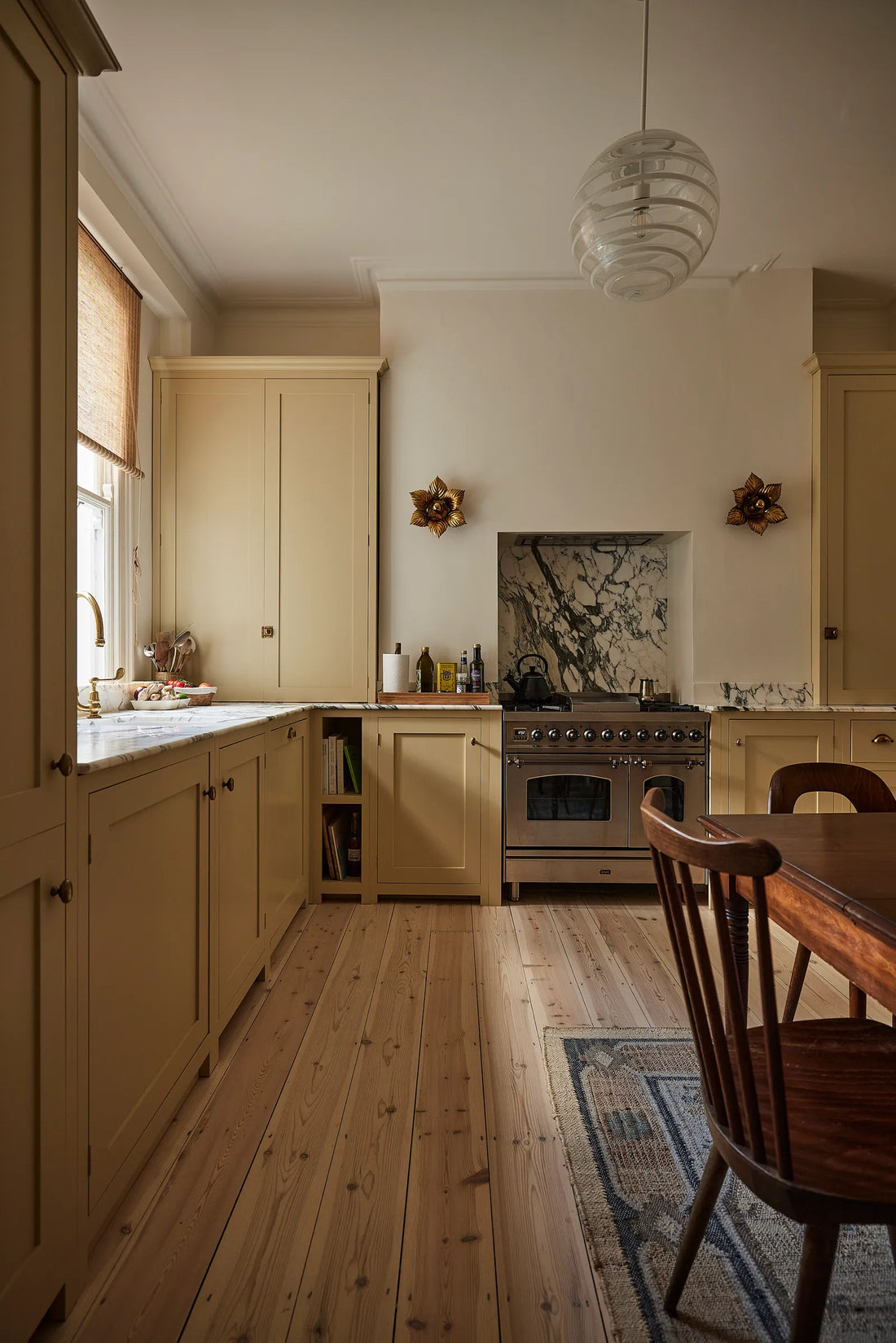
Do You Still Need the Kitchen Triangle?
Back in the 1940s, the kitchen work triangle was the Beyoncé of kitchen design: stove, sink, refrigerator—three points of power, perfectly choreographed for efficiency. You were supposed to place them 4–9 feet apart; a total perimeter of 13–26 feet was considered the Goldilocks zone—not too cramped, not too spread out.

image credit: Robert Cunningham
What Was That Triangle All About?
It was all about minimizing steps. You’d shuffle from fridge → sink → stove in a slick triangle, saving energy and time which, in Gilbreth’s day, might equal fewer retorts and more strawberry shortcake. This “circular routing” proved that going in circles could actually save effort.

Why Kitchen Triangle Still Matters
Even though kitchens have grown and gained more roles—dining room, homework nook, party central—the triangle is still praised by professionals. It’s a powerful starting point for creating ergonomic flow and avoiding those “why is this so far apart?” frustrations. Living etc. recently cautioned that trashing the triangle could lead to poor workflow—especially in small spaces or chaotic layouts. And construction pros say ignoring triangle logic is one of the six kitchen mistakes they see in flops—which kills both function and value.

image credit: Scarlett Jones of Sims Hilditch
But Wait—Is It Obsolete?
In some cases, yes. If you have a one-wall kitchen—or a sprawling open-plan diner—strictly enforcing a triangle may feel forced or flat-out impossible. Instead, designers have embraced a zoning model—working zones for prep, cooking, cleaning, baking, storage, even coffee station—and these often provide more flexibility in modern times.
Triangle vs. Zones: The Great Showdown
| Feature | Kitchen Triangle | Kitchen Zones / Stations |
|---|---|---|
| Fit for small kitchens? | ✔️ Tight but effective | ✖️ Zones can feel cramped or redundant |
| Open-plan friendly? | ✖️ Traffic flows can disrupt it | ✔️ Islands/peninsulas define separate activity areas |
| Single cook? | ✔️ Simple and efficient | ✔️ Zones can still work—just more spread out |
| Multiple cooks? | ✖️ Traffic may interfere | ✔️ Each cook gets a personalized work zone |
How to Decide
Size matters: In compact kitchens, a compact triangle is still the easiest way to keep everything reachable
Lifestyle rules: If your kitchen also hosts brunch parties, do laser cutting homework with your kids—or serves coffee-shop vibes—zoning may work better.
Traffic flow: If in-and-out family traffic cuts right through your triangle, consider splitting it or staging zones.
Aesthetics vs. function: Don’t let a purely Instagrammable layout sabotage real workflow. As House & Garden warns, details can make or break a kitchen—and bad layout planning is their #1 downfall.

image credit: DeVOL
Bottom Line
You don’t have to obey the golden triangle religiously—but don’t toss it out either. Think of it like good grammar in writing: you don’t need grammar to text—but when you want clarity, flow, and ease, it helps. The triangle is still a terrific rule of thumb—but if your space and habits demand more flexibility, modern zones give you permission to break the triangle and still cook up brilliance.
So: yes, you can still use the kitchen triangle—especially if your space is cozy and you need tidy efficiency. No, you don’t need it—especially if your kitchen is an expansive, multi-user, multi-use zone where flexibility reigns supreme.
And the real secret? Design around how you actually cook and live—not around an abstract shape. That’s where the triangle becomes optional, but thoughtful design becomes essential.
-Juliette
